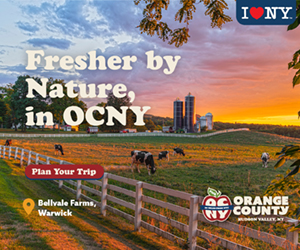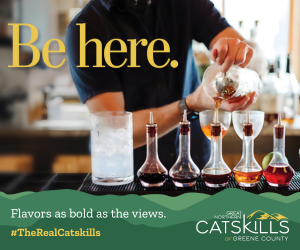A plethora of wines made from hybrid varieties are emerging from “under-the-radar” status to notable wines, and it’s happening in our backyard. Hybrid wines are the backbone of the Hudson Valley wine industry. Vilified in the 20th century, many hybrid vines were ripped up across the U.S. and replanted with grafted vinifera. Today, a keen perception shift is taking place, either out of necessity—as in Champagne and many other highly regulated regions of Germany, Austria, and Hungary, turning to the use of hybrids to combat the effects of climate change on their production, or out of sheer interest and a realization of the beauty that can be found in these wines.
Hybrid grapes are crosses between the European vine, Vitis vinifera, and various native, wild American species such as Vitis rupestris, riparia, aestavalis or labrusca. They are bred to be cold-hardy, fungus disease and pest resistant, and very productive. Cornell University and the University of Minnesota have breeding programs that focus exclusively on hybrid grapes and have created thousands of new varieties which are available today.
The Pioneers
In the ’70s, Benmarl Winery in Marlboro grew tons of experimental French-American hybrids and settled on more than a dozen of them for commercial wine production. This is where J. Stephen Casscles, author of Grapes of the Hudson Valley and known for successfully growing and vinifying hybrid grapes at his home vineyard and at Hudson-Chatham Winery in Ghent, first became acquainted with hybrids. “I worked at Benmarl Winery on and off from 1974 to 1986 and learned so much from the Millers about hybrids,” says Casscles. “You can make quality wines from hybrids if you treat them like quality grapes.”
Michael Migliore and Yancey Stanforth-Migliore of Whitecliff Vineyard & Winery in Gardiner began planting hybrids in 1979 and spent the past four decades perfecting their viticulture. Traminette, Seyval Blanc, and Vignoles were some of the early varietals planted—all of which are still being used by the winery. Their most popular bottlings are Awosting White and the Red Trail—both wines made with hybrids, but the blend name removes the concern of consumers shying away because they don’t know the grape.
Vilification of Hybrids
In the 20th century, wineries that only grew vinifera began to question the place of hybrids in fine wine. Vinifera producers declared that hybrid wines were a bastardization. Planting new vineyards of certain hybrids was banned by the French government, and there were those who insisted that consuming hybrid wines caused ill health, and even madness.
During this time there was a lot of what Stanforth-Migliore calls “vinifera racism” and describes it as a blanket assumption that hybrids don’t have the gravitas of vinifera because they are crossings. Her response: “Cabernet Sauvignon is the most popular red variety and it is a cross of Sauvignon Blanc and Cabernet Franc.” Hybrid plantings began being ripped up and replanted with vinifera, but some wineries held on to their plantings and perfected their viticulture and winemaking around it, and have succeeded in making world-class bottlings.
Even so, wine consumers and the trade continued to shun hybrid wines, claiming they are “foxy”, lack tannin structure, and don’t have ageability. All of these things could occur with any wine made from any grape if grown or vinified improperly.
“You can make quality wines from hybrids if you treat them like quality grapes.”
—J. Stephen Casscles, author, winemaker
“Foxiness [usually associated with hybrids that have native labrusca in their heritage] develops later in the growing cycle so picking earlier can circumvent that aroma,” says Anna Katharine Mansfield, Ph.D., Associate Professor of Enology at Cornell. “To combat under ripeness, a winemaker may choose to blend with another varietal or chaptalize [add sugar].” To aid in tannin structure, according to Mansfield, there are options in the cellar to consider. “Understanding types of proteins that can aid in developing better skin contact will increase tannin structure,” she says.
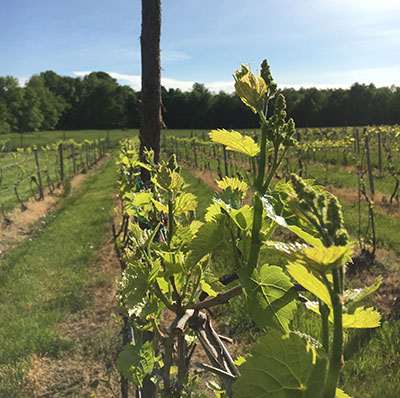
Experimenting with yeast strains can bring out certain qualities in a grape. “We grow Seyval Blanc and Cayuga—our first block planted in 2006 was Cayuga and it’s still going strong,” says Monica Pennings, owner and winemaker at Christopher Jacobs Winery at Pennings Vineyards in Pine Bush. “I’ve played around with different yeast strains to bring out various characteristics. We shoot for fruity and citrus notes, and created Bella (made with Seyval Blanc), Holy Cow and Ole (Cayuga white wines) perfected with specific yeasts.”
When it comes to ageability, there are many hybrids that are known to evolve in the bottle. “Some hybrids age very well—Chelois, Baco Noir, and Chambourcin for reds, and Seyval Blanc and Vidal for the whites. The reds will age well for 20 to 30 years,” says Casscles. “I recently had a blend of Baco Noir, Chelois, Foch, and Chancellor called Cuvee 17 made in 1977 at Benmarl—a great wine.”
“In the cellar, producers shouldn’t be trying to treat hybrids like vinifera—don’t take blueberries and try to make apple juice … There is terroir within each cultivar and we should be striving for authenticity in expression.”
—Anna Katharine Mansfield, Ph.D., Associate Professor of Enology at Cornell
Another opinion is to make a wine that expresses the typicity of the grape and the terroir of the region without over-manipulation. “In the cellar, producers shouldn’t be trying to treat hybrids like vinifera—don’t take blueberries and try to make apple juice,” says Mansfield. “We should be making the best Baco Noir instead of Baco Noir made to mimic Cabernet Sauvignon. There is terroir within each cultivar and we should be striving for authenticity in expression.”
Coming into Their Own
After years of denigration, why the recent shift?
“It is apparent that the hybrid movement is gaining more mainstream momentum,” says Mansfield. “France was literally taught that hybrid grapes were poisonous and now we see Champagne embracing hybrids in order to get in front of the effects of climate change. England, as a newer wine market, realizes the potential and uses many hybrid grapes in their beautiful sparkling wines. That’s bold for a region trying to break in.”
Extreme weather, exacerbated by climate change, is one of the reasons behind the recent awareness. “We saw 70 percent vine mortality with our vinifera plantings after the spring frost, meanwhile, our Le Crescent did fine,” says Todd Cavallo, owner and winemaker of Wild Arc Farm in Pine Bush. Casscles’s experience is reflected by Cavallo, adding, “with the changing climate and more violent weather patterns we are experiencing, growers are looking at hybrids in a new light. If you grow grapes for a living, you need to get a crop.”
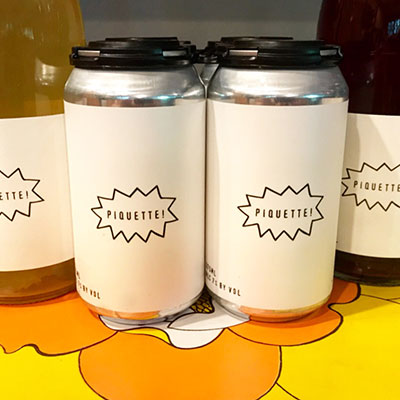
Hybrids are the new face of the natural wine market—gaining a wider appreciation due to less need for intervention. Master Sommelier Pascaline Lepeltier is encouraging the use of hybrids and is driving the point home with her project Chepika—a Pét-Nat (pétillant-naturel) made from the Catawba grape. Wine writer and natural wine cheerleader Marissa A. Ross declared recently in Bon Appétit Magazine, “It’s about time the industry’s much-maligned crossbred species get its due.”
Wild Arc Farm, a small, biodynamic winery, is a prime example of adventurous and hip winemaking happening in our valley. “We are a low-intervention winery, adding minimal (if any) sulfur, zero other additives, and only native yeast ferments,” says Cavallo. “We don’t fine or filter any of our wines. We feel that this is the best way to represent the terroir of a region, rather than making wines to fit a profile regardless of their source.” Wild Arc produces an interesting take on Traminette—Luca is a skin-contact orange wine. “We are also experimenting with Noiret and Cayuga as a co-ferment,” says Cavallo. “Noiret has peppery Syrah notes and we use the Cayuga almost like they use Viognier with Syrah in the Rhône Valley, to give a bold wine a floral lift.”
Frank Graessle, co-owner, and winemaker of Clearview Vineyards in Warwick has also had great success with Noiret. “Noiret is one of our most popular wines and it is the darkest wine I have ever seen,” says Graessle. “It is peppery, with both green and black pepper, and hints of raspberry, strawberry, and cherry.”
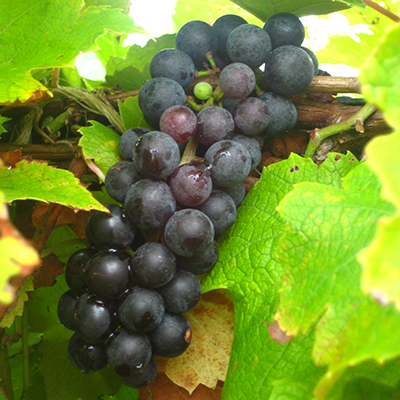
Many wineries that have stood by hybrid wines and had success with them are trying cultivars that are new to the Hudson Valley region. “Hudson-Chatham and Whitecliff are both working with Marquette—a relatively new Minnesota cultivar, and it’s going gangbusters,” says Mansfield. “The wineries that have always been open to hybrids are open to trying new ones.” Whitecliff will release its first single-varietal Marquette wine later this year.
Looking toward the future with a nod to the past, Casscles is interested in reviving grapes that were developed right here in the Hudson Valley. “We are working on bringing to the fore Hudson Valley Heirloom varieties, such as Jefferson, Croton, Iona, and Empire State, developed in the Newburgh area in the 1860s to 1890s,” he says.
It’s an exciting time to see the world take note of something our region has perfected. The biggest hurdle is for consumers to take a chance on a wine that they don’t recognize. Be adventurous in your next wine purchase and let us know what you think!


